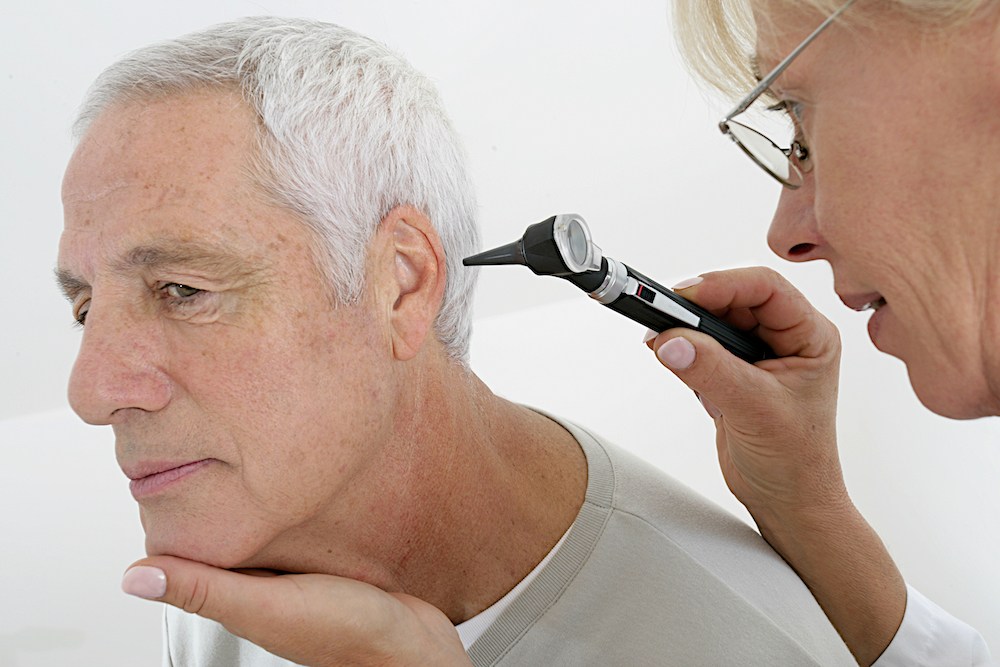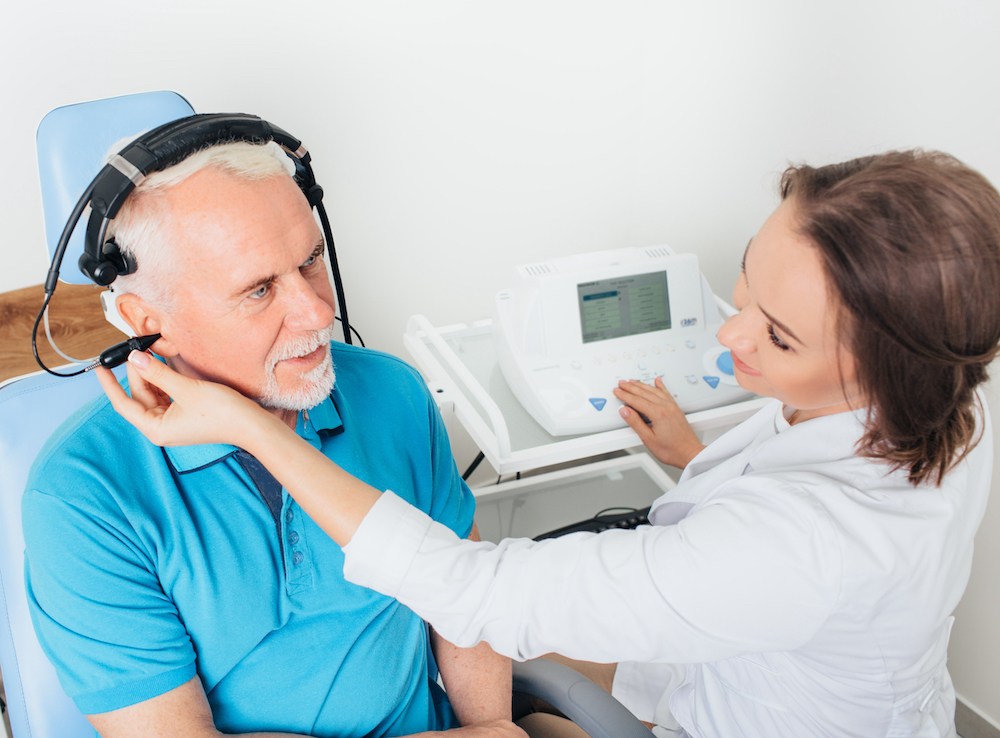The Importance of Follow-Up Care in Hearing Health
Follow-up care is an essential part of maintaining your hearing health

By: admin | September 25, 2024
When you meet with a hearing instrument specialist, the focus is all about understanding your unique hearing needs. They’ll take the time to get to know your concerns and answer any questions before guiding you through a series of personalized hearing tests. After the testing, you’ll sit down together to review the results, where they’ll explain any signs of hearing loss and discuss what steps could best support your hearing health.
Your results will be presented on an audiogram, a chart that shows the range of sounds each ear can pick up. If you’re curious, you can ask to see this chart, and your specialist will walk you through what it means. To help you better understand and explain your results to others, these tips can make interpreting the audiogram easier.
Understanding the different types of hearing tests can provide valuable insight into how your hearing works and what may be affecting it. Professionals use various testing methods to assess your ability to hear and interpret sounds. These tests range from measuring pure tones to evaluating how well your brain responds to sounds. Below is an overview of some of the most common hearing assessments and how they’re conducted.
What it is: Pure tone audiometry is a highly accurate hearing test often referred to as the “gold standard” for evaluating hearing ability. It measures both the intensity and tone of the sounds you can hear in each ear, determining your hearing sensitivity and balance of loss.
How it’s done: During the test, an audiometer generates sounds of varying pitches and volumes. You’ll wear headphones and raise your hand or signal when you hear a tone, allowing the specialist to assess each ear individually. Without headphones, sound-field testing can be performed to check both ears simultaneously.
What it is: Speech recognition testing evaluates how well you can understand speech at various volumes and in different listening environments. It helps determine how hearing loss affects your ability to interpret spoken words, especially in noisy situations.
How it’s done: You’ll listen to a series of words or sentences at different volumes through headphones or speakers, then repeat what you hear. The results provide insight into how well your brain processes speech, which is essential for diagnosing specific hearing difficulties.
What it is: The ABR test measures your brain’s reaction to sound to identify any issues along the auditory nerve pathway from the ear to the brain. This test is often used when diagnosing hearing loss caused by neurological problems.
How it’s done: Electrodes are placed on your scalp and around your ears, and earphones deliver sound. The test tracks your brain’s electrical responses to these sounds without any action required from you, as you simply sit still.
What it is: The OAE test assesses the health of your inner ear by measuring the faint sounds (emissions) produced by hair cells in the cochlea when they respond to sound. In a healthy ear, these cells generate vibrations, but in those with hearing loss, emissions are absent.
How it’s done: A small probe is placed in the ear to emit sound and capture the responses. Your role is to sit quietly while the device measures the vibrations produced by the hair cells.
What they are: Middle ear tests focus on identifying issues between the outer and inner ear. Three types of tests are used: tympanometry, which checks eardrum mobility; acoustic reflex, which measures muscle responses to sound; and static acoustic impedance, which assesses ear canal air pressure to detect eardrum abnormalities.
How they’re done: A probe is placed in your ear, producing sounds or small air pressure changes to evaluate eardrum function or muscle reflexes. The results help pinpoint issues affecting your middle ear’s ability to transmit sound effectively.
Several factors can influence the accuracy of your hearing test results, and understanding them is essential for obtaining the most precise assessment of your hearing health. One of the primary factors is environmental noise. If the test is conducted in a room with background noise, even low levels, it can affect your ability to hear the test tones clearly. This is why most hearing tests are performed in soundproof booths or very quiet settings to eliminate any external interference.
Another significant factor is your physical condition at the time of the test. If you are experiencing a cold, sinus congestion or ear infections, these conditions can block the ear canal or affect the eardrum, leading to temporary hearing loss. Such conditions can skew the results, making it seem like your hearing is worse than it actually is. It’s often recommended to postpone hearing tests if you are feeling under the weather to ensure accurate outcomes.
Your mental state can also play a role in hearing test results. Fatigue, stress or anxiety can hinder your ability to focus on the sounds being tested, potentially causing you to miss tones or speech cues. This can result in inaccurate findings, especially in tests that rely on your active participation, like pure-tone audiometry or speech recognition testing. Being well-rested and relaxed before the test can help you respond more accurately to the sounds presented.
Lastly, the fit and condition of the testing equipment can impact your results. If headphones or earphones don’t fit properly, or if there is an issue with the equipment, the sounds may not be delivered at the correct volume or pitch. This can lead to unreliable results, so professionals must regularly check and calibrate their equipment to ensure it is functioning optimally. Proper equipment handling ensures the accuracy of the test, providing a clearer picture of your hearing abilities.
After completing your hearing test, discussing the results with your hearing instrument specialist (HIS) is a crucial step in understanding your hearing health. One of the key outcomes of your test is an audiogram, a chart that visually represents your ability to hear sounds at different frequencies and intensities. Though it may seem complicated at first glance, your HIS will help you interpret the data, explaining what the chart reveals about your hearing thresholds and overall auditory function.
Your audiogram will typically feature two axes: frequency (measured in Hertz) on the horizontal x-axis and intensity (measured in decibels) on the vertical y-axis. The HIS will guide you through how these measurements relate to the sounds you hear in daily life. For example, higher frequencies represent higher-pitched sounds like birds chirping, while lower frequencies correspond to deeper sounds, like thunder. The intensity levels on the chart indicate how loud a sound must be for you to hear it, and your HIS will help you understand how this relates to normal conversation or other sounds in your environment.
During your consultation, the HIS will also explain the different levels of hearing loss, if present, and how your results fall within these categories. Mild, moderate or more severe hearing loss may be identified, depending on how your hearing thresholds align with the typical decibel ranges. This information will allow your HIS to recommend personalized solutions, like hearing aids or other assistive devices, based on your specific needs.
Finally, your HIS may discuss additional testing results, like speech recognition scores, which measure your ability to distinguish between different speech sounds. This can provide a more complete picture of your hearing ability beyond just sound detection. Together, this detailed analysis of your hearing test will help you and your HIS determine the best path forward for improving your hearing health.
Hearing loss can result from a variety of factors, both environmental and biological. One of the most common causes is prolonged exposure to loud noises, like listening to music at high volumes, working in noisy environments or attending loud events without proper ear protection. Over time, this noise exposure can damage the sensitive hair cells in the inner ear, leading to gradual hearing loss that may be irreversible.
Age-related hearing loss, known as presbycusis, is another major contributor. As we age, the structures in the inner ear naturally deteriorate, making it harder to hear higher-pitched sounds. Genetics also play a role, as some individuals may be more prone to hearing loss due to hereditary conditions affecting ear function. Infections or chronic illnesses like diabetes and heart disease can further increase the risk by affecting blood flow to the auditory system.
Certain medications, known as ototoxic drugs, can also harm hearing. These include some antibiotics, chemotherapy drugs and even over-the-counter pain relievers when taken in high doses. Lastly, physical damage to the ear, such as trauma from a sudden impact or an ear injury, can lead to hearing loss if the delicate structures of the ear are compromised.
Hearing aids are one of the most common and effective treatments for hearing loss, helping individuals regain clarity and connection in their daily lives. These small devices amplify sounds, making it easier for people with mild to profound hearing loss to hear conversations, music and environmental sounds. Modern hearing aids are designed with advanced technology, allowing wearers to experience clear sound quality in various environments, from quiet rooms to noisy outdoor spaces.
Hearing aids come in various styles, including behind the ear (BTE), in the ear (ITE) and in the canal (ITC), offering options to fit different levels of hearing loss and individual preferences. Many are equipped with features like noise reduction, directional microphones and even Bluetooth connectivity, enhancing both the listening experience and overall convenience. While they do not cure hearing loss, hearing aids can significantly improve speech comprehension and quality of life for those affected, helping them stay engaged with the world around them.
Understanding your hearing health doesn’t end at knowing your specific numbers. It’s also about taking active steps to manage and improve your hearing abilities. Just as maintaining a healthy lifestyle involves eating right and exercising regularly, taking care of your hearing health requires consistent care and attention.
It’s essential to keep in regular contact with your hearing specialist, ensuring you stay updated on any changes or improvements in your hearing capabilities. Additionally, adopting good hearing practices like avoiding exposure to loud noises can go a long way in preserving your current hearing abilities. Managing your hearing health is an ongoing process – one that requires commitment and care from you. With the right approach, you can take charge of your hearing health and lead a life full of sounds!
Your understanding of hearing test results provides a clear view of your auditory health. This knowledge helps you evaluate your situation and consider appropriate treatments or interventions. Keep in mind that this is just one step in the ongoing journey toward better hearing. Belcher Hearing Aid Service is here to guide you further on this path. Our dedicated team of hearing specialists are ready to help interpret your test results, discuss potential treatment options and answer any questions you may have.

Follow-up care is an essential part of maintaining your hearing health
By: admin | November 18, 2025

Tinnitus can be one of the most frustrating hearing problems to deal with
By: admin | September 24, 2025

Stress and hearing health affect each other in ways we often don’t
By: admin | May 23, 2025
